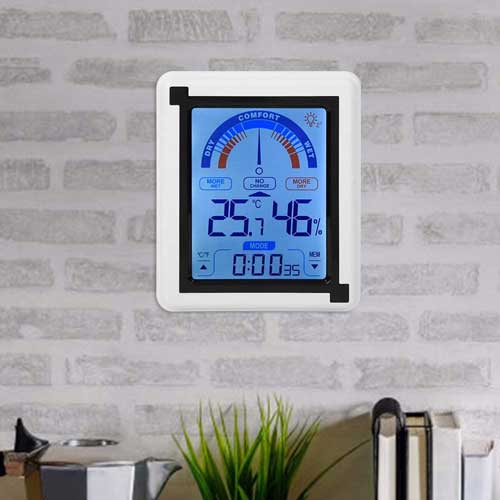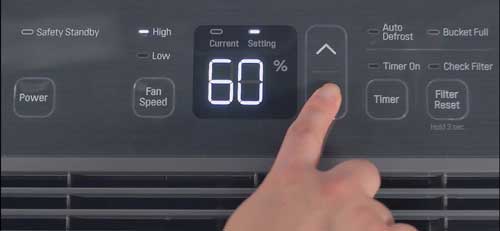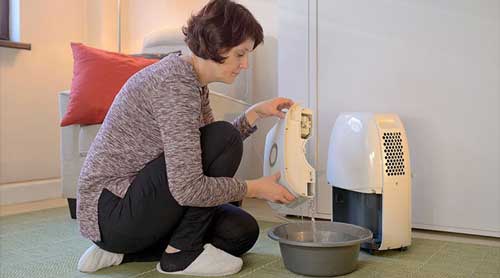Spaces with excess humidity provide a conducive breeding environment for mold and bacteria, inviting health issues, structural damage to your property, and bad odors.
But how can you derive maximum benefits from your moisture extractor? Can a dehumidifier work with windows open?
Let’s jump right in.
Disadvantages
Dehumidifiers pull in humid air from your environment and release drier, clean, fresh air back into your space. However, running your dehumidifier with windows or doors open invites a couple of problems:
Reduced Dehumidifier Lifespan
There is a wide array of dehumidifier models in the market today. Regardless of their shape and size, all moisture extractors are designed to extract humidity from a confined and limited area.
Operating a moisture extractor (i.e. dehumidifier) with windows open means that your unit will dehumidify the air from the outside environment as well. This will force the appliance to overwork, and thereby reducing its lifespan drastically.
- Key Point: Open Window – Reduces Lifespan & Makes Dehumidifier Overwork.
Increased Electricity Bills
Opening windows is an excellent way of allowing indoor moisture to escape. However, humidity and airborne contaminants might find their way into your living space through the same route, which is especially true if your indoor atmosphere is less humid than the outside air.
Running your dehumidifier with windows open wastes energy as you end up extracting moisture for long hours. If your moisture extractor can maintain the ideal relative humidity while windows are open, the unit could be designed for larger spaces; you probably require a smaller appliance. This will hence decrease your electricity bills.
- Key Point: If indoor atmosphere is less humid as compared to the outdoor, will require dehumidifier to continuously work i.e. increase electricity charges.
Effective Operation
Read the User Manual
It’s important to go through the user manual that’s often included in the appliance package. This will allow you to familiarize yourself with the manufacturer’s operational guidelines. It will help keep the user manual in reach and refer to it whenever you’re in doubt.
Use a Hygrometer
A hygrometer is used to measure the level of humidity in your indoor environment. The ideal RH in any given room is 30%-50%; anything above 50% can trigger mold growth, discomfort, bad smells, damage to your belongings, and health issues.
On the flip side, anything below 30% can contribute to the destruction of your home, including separated wood floors and cracked ceilings, and furniture. An overly dry indoor atmosphere could also lead to chapped lips, dry skin, nosebleeds, and sinus, among other health issues.
- A hygrometer will help you determine how much humidity you must extract from your room to achieve the recommended level without overdoing it.

Use an Appropriate Power Outlet
Plug the dehumidifier into a polarized and three-pronged outlet; avoid using an extension cord. You will want to seek professional help to fix a grounded outlet if you don’t have a proper plug.
- Ensure to unplug the dehumidifier by pulling its cord gently from the socket. Refrain from yanking the cord when disconnecting it.
- The cord shouldn’t be bent or twisted.
Switch on the Dehumidifier and Create Configurations
Most moisture extractors come with a simplistic on/off button and a digital control panel to ease your setup task. Some units boast an automatic humidistat that allows you to set your ideal moisture level; the unit will automatically adjust its fan settings to achieve your desired humidity percentage.

Only Run Your Dehumidifier when Needed
Contrary to the prevailing misconception, it’s unnecessary to run your dehumidifier all the time. The unit should only be used continuously in the first few hours, days, or weeks of purchase, depending on the humidity level in your home.
- After this period, the dehumidifier should only be run when the moisture levels go beyond the 50% threshold.
Drain the Water Bucket Frequently
Dehumidifiers collect a lot of water, depending on the amount of moisture in your indoor space. If you’re not using the gravity or pump-assisted drainage option, you will need to empty the bucket regularly.
- Unplug the unit from the power source before removing the water bucket.
- Pay close attention to the water levels, especially when your room is too humid. Most dehumidifier models will turn off automatically when the bucket reaches capacity to prevent an overflow.
- Check your unit’s manual to know the recommended frequency for emptying the reservoir.

The Bottom Line
While you can’t control humidity in the outdoors, you can keep the moisture levels in your home in check using a dehumidifier, which is relatively low cost. A dehumidifier’s primary function is to extract excess moisture from your indoor atmosphere, including in your basement, bathroom, kitchen, or even closet.
After purchasing a dehumidifier, you’re probably looking for ways to get more bang for your bucks. Among the unspoken rules that you must observe when using dehumidifiers is closing all the windows and doors. These openings can potentially allow humidity from the outdoor environment to filter into your living space. This leaves the dehumidifier straining to maintain your preferred moisture levels, and thus shortening its lifespan while increasing your energy bills.
RELATED: I highly recommend you learn about how to prolong dehumidifier lifespan.
Apart from closing the windows while running your dehumidifier, you will want to adopt the above habits, which will enable you to derive maximum benefits from your unit.

